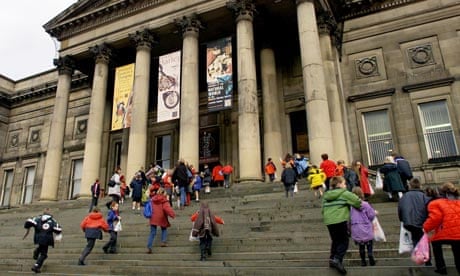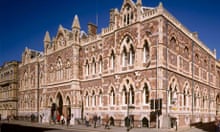More than half of museums in the UK have had their budgets cut in the last year, with nearly a quarter closing off all or part of their sites to the public.
A report for the Museums Association paints a depressing picture of the state of the sector, said the organisation's director, Mark Taylor. "Museums are easy targets, there is no doubt about that. Local authorities are not statutorily obliged to fund them and they are quite often put down as elitism."
A total of 31% of museums have had their budgets cut two years in a row. "For many that is beyond meltdown," Taylor said. "What is unfortunate is that we are breaking records in terms of people wanting to visit museums, and it seems like the more popular they get, the more the doors are closed."
Taylor said local museums were suffering in particular. "A lot of these places are the heart and soul of the local community, they give people a sense of place and history, and once gone they are pretty damn hard to open up again."
The report is based on the responses of 114 museums across the UK. More than half (51%) said their budget had been cut last year, and 31% experienced a cut of more than 10%. Of those museums, 83% said they had cut staffing levels and 49% had increased prices for school visits.
A total of 22% of museums have reduced public access by closing whole or parts of sites. One principal museum officer in Scotland said in the report: "Due to [a] reduction in staff and having to close before October we could not open for the school holiday fortnight."
A head of libraries and heritage at a council in central England said: "Following a 66% reduction in what is now our collection access team in 2011-12, we now do very little outreach and maintain a smaller onsite exhibition."
Most people in the museums sector accept that they are not immune to cuts, but there is a growing concern over the number of closures. The Museums Journal this week reports the closure of the small but popular Church Farmhouse museum in Hendon.
It joins a growing list of closures including the Livesey Museum in Southwark, the National Conservation Centre in Liverpool, the Botanic Gardens Museum in Sefton, the Pumphouse Educational Museum in Southwark, Stamford Museum in Lincolnshire and Etruria Industrial Museum in Stoke-on-Trent.
Museums are attempting to adapt, with 69% saying they will concentrate more on generating income over the next year and 62% saying they will concentrate more on fundraising.
"There is an element of 'we will survive'," said Taylor. "Twenty years ago museums were not in such a good shape during the last major round of cuts. Now they are better led, better managed and determined to keep museums open. They have to raise more money and it may be some museums survive because they have learned to diversify their income."






Comments (…)
Sign in or create your Guardian account to join the discussion